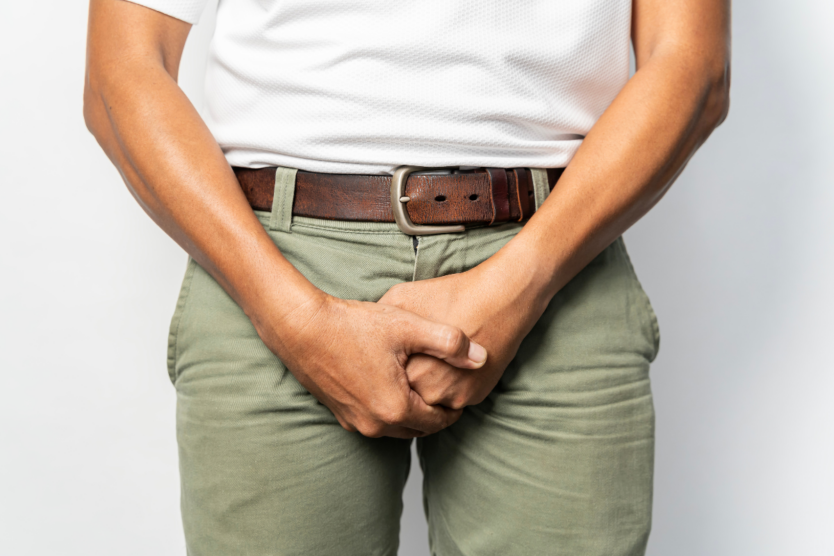Most women know the feeling—that sudden urge to pee and no bathroom in sight.
Some of us have trouble with a constant urge to pee, while others leak urine unintentionally. In other words, you may be suffering from an overactive bladder, or you may have incontinence issues. The conditions are different, but some of the medications to treat them are similar.
Let’s explore these different conditions and the common medications for bladder control.
Overactive Bladder vs. Urinary Incontinence
There are different conditions that cause “troubles with peeing” among women.
Overactive Bladder: this is the medical term for those who have a strong urge to urinate multiple times a day and overnight, even though the bladder is not full. The sudden urge means it isn’t always possible to postpone peeing, so for some people, it also leads to wetting accidents when urine leaks.1
Diagnosis happens for people who urinate eight or more times during the day or at least twice overnight. Up to 40% of women in the United States have overactive bladder. It can be a standalone condition or a symptom of a chronic health condition, such as diabetes or multiple sclerosis.2
Urinary Incontinence: this is the involuntary leakage of urine, a common condition among women. In fact, it affects 50% of adult women, increasing with age as up to 75% of women over 65 report urine leakage.3 Some women have urge incontinence and others have stress urinary incontinence.
While the two conditions can be related, they are not the same thing. A person can have one without the other, but about one-third of people with overactive bladder experience urinary incontinence.2 As well, estimates place the number of people with overactive bladder who experience only the symptoms of urgency and frequency at 63%, while the remaining 37% also have wetting accidents or urge incontinence.1
Medications for Bladder Conditions
The Mayo Clinic provides information on medications for overactive bladder, as well as those for urinary incontinence. In many instances, the same type of medication can be used to treat either condition.
Here are a few categories of medications for overactive bladder and medications for bladder control—note that these are not brand names.
1. Anticholinergic drugs: these block the action of the chemical messenger that signals your brain to trigger bladder contractions associated with an overactive bladder. These contractions may cause an urge to pee even when the bladder isn’t full.4 This type of medication may also be helpful for urge incontinence.5
2. Mirabegron: approved to treat certain types of urinary incontinence and may help with overactive bladder too. It relaxes the bladder muscle and increases how much urine the bladder can hold. As a result, it might also increase the amount you’re able to pee which can empty your bladder more completely.4
3. Low dose, topical estrogen: the decrease in estrogen after menopause may contribute to weakening of the supportive tissues around the bladder and the tube that allows urine to pass from the body, contributing to stress incontinence. Estrogen may help restore the tissues in the vagina and urinary tract to relieve some symptoms.4
4. Botox: injections into the bladder muscle might help with overactive bladder or urge incontinence. Botox blocks that chemical messenger and paralyzes the bladder muscle.4
Other options include two forms of antidepressants to relax bladder muscles.4
Bladder Treatment Without Medication
Your treatment plan could also be based on the diagnosis of your bladder control issue. Stress urinary incontinence is one example. SUI is when urine is released without control because of increased pressure on the bladder. As a result, it often happens when a woman coughs, sneezes, or laughs, or during physical activity.
There are options to treat SUI beyond medications. An effective treatment for SUI is pelvic floor muscles exercises, commonly known as Kegels. These exercises are a non-invasive, proven and effective way to manage stress urinary incontinence. That’s because they strengthen the pelvic floor, the muscles and ligaments that support your pelvic organs—your bladder, bowel, and uterus.
Research has proven that pelvic floor exercises help keep pelvic floor muscles “fit,” and can be used as an effective treatment for women suffering with stress urinary incontinence. They may also help with overactive bladder.
There are tools available to be sure you are performing Kegels properly. The INNOVO Urinary Incontinence Kit uses Multipath Technology to engage and strengthen your pelvic floor. These “smart shorts” allow you to perform 180 precise Kegels per session without side effects. Think of it as the perfect Kegel exerciser, allowing you to properly train your pelvic floor.
A clinical study guided by the FDA had amazing results: 87% of women were defined as dry after just 12 weeks, and 90% of users would recommend the therapy to others. Subscribe to the INNOVO newsletter to receive a $20 discount code for your purchase!
Are There Ways To Have More Bladder Control?
Ask Your Doctor
If you’re struggling with an overactive bladder or bladder control issues like urinary incontinence use our Physician Finder to find a doctor near you with expertise in women’s health. A proper diagnosis and treatment plan may include medications, exercise, or both.




















